Section 7: Envisioning and Enacting a Decolonized Present and Future
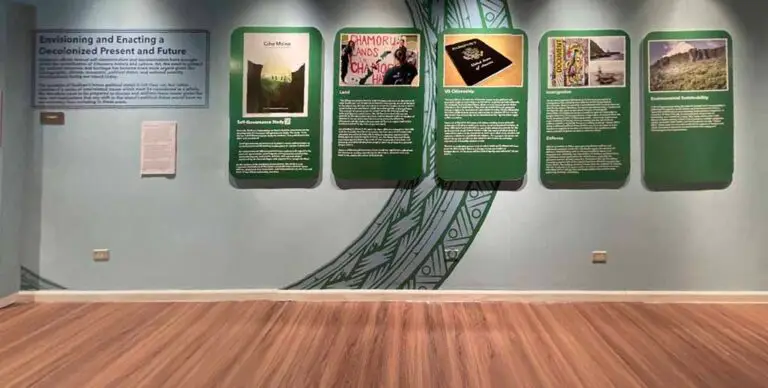
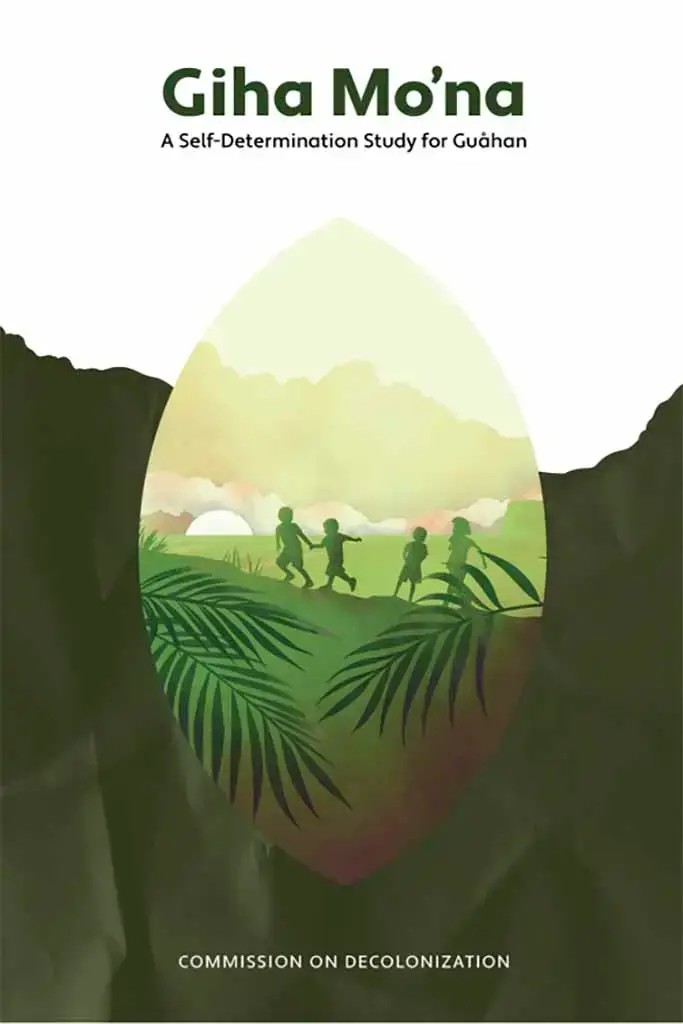
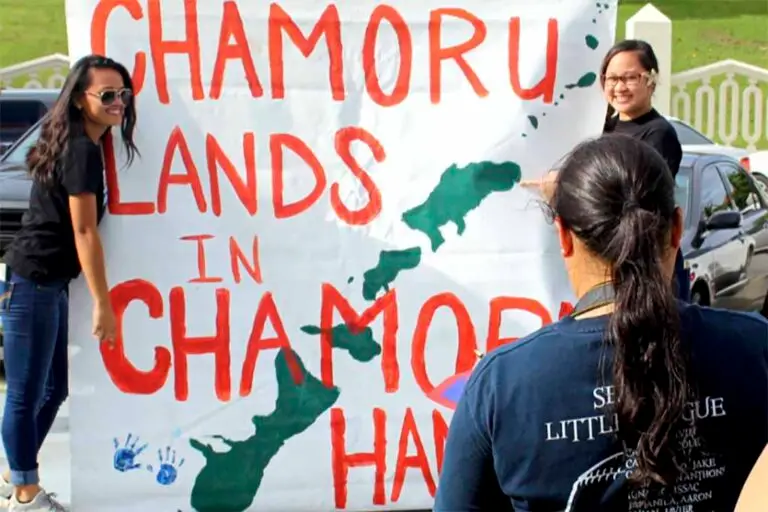
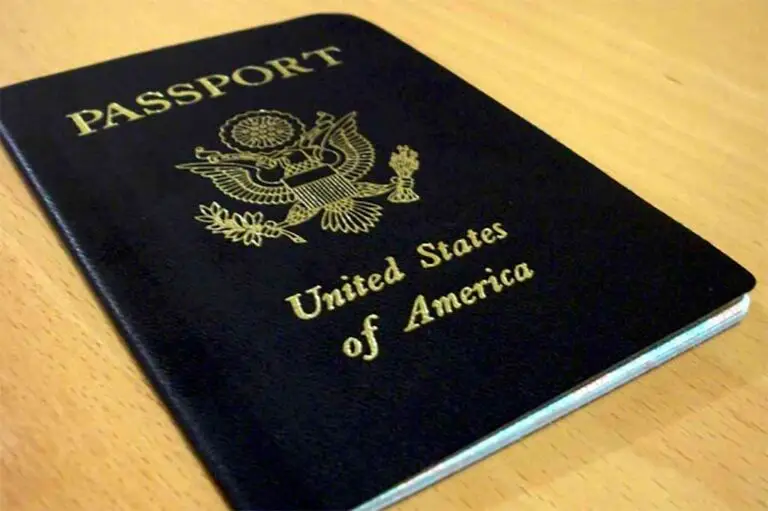
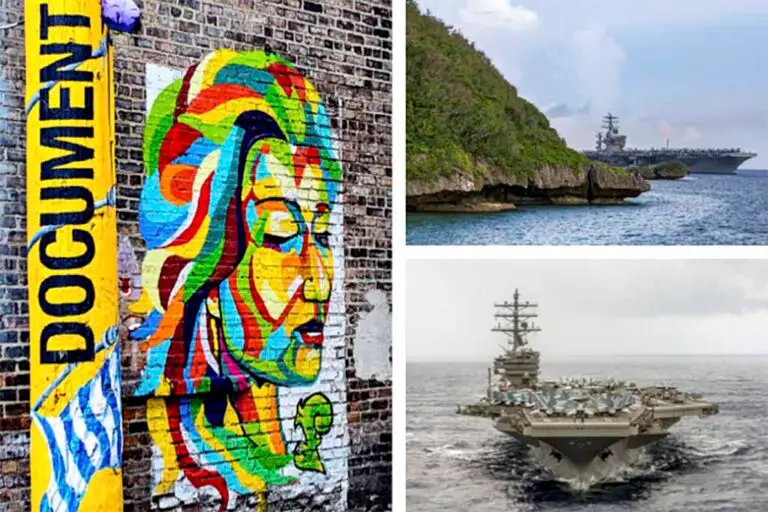
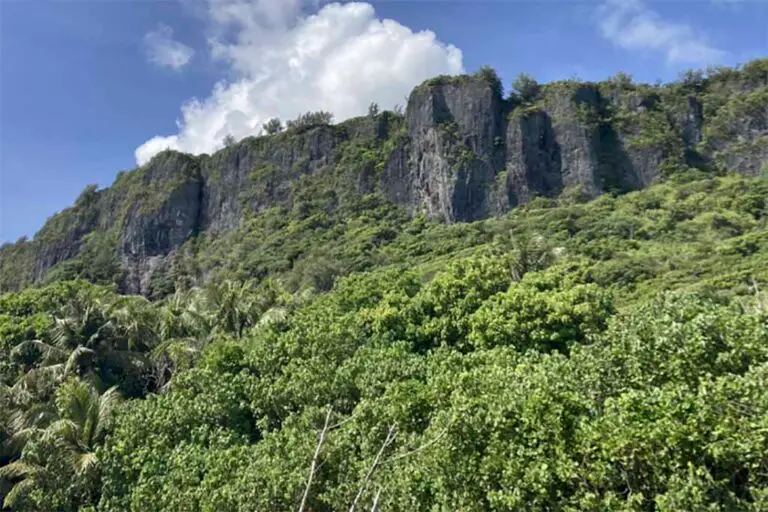
Table of Contents
Share This
CHamoru efforts toward self-determination and decolonization have brought about the revitalization of CHamoru history and culture. Yet, the need to protect our cultural resources and heritage has become even more urgent given the demographic, climate, economic, political status, and national security developments facing our island today.
The question of Guåhan’s future political status is not clear-cut, but rather, consists of a series of interrelated issues which must be considered as a whole. We therefore need to be prepared to discuss and address these issues given the very real implications that any shift in the island’s political status would have on our everyday lives including in these areas.
Inifresi
Thirty years ago, education leader Dr. Bernadita Camacho Dungca wrote the Inifresi, a call to all people who call Guåhan home to rise and protect this island and all its unique attributes. In 1998, Governor Carl TC Gutierrez issued an executive order which called for the Inifresi to be adopted as the “Chamorro Pledge of Allegiance” and for it to be taught and recited in Guåhan’s public schools. Similar to the Fanohge CHamoru that preceded it, the Inifresi has become one of the most important expressions of CHamoru love and loyalty for their island home. The two are often performed together in place of the Pledge of Allegiance and “Star Spangled Banner” as opening testaments of patriotism and loyalty to this land.
Infresi by Wettengel Elementary School students
The Infresi performed by fourth grade reading class of Wettengel Elementary School, Summer 2021. View in Vimeo.
Self-Governance Study
Recently, Guåhan’s Commission on Decolonization commissioned the development of a two-part self-governance study. The study, “Giha Mo’na: A Self-Determination Study for Guåhan,” was published in late 2021 and consists of:
- A self-governance assessment of Guåhan’s current political status as an unincorporated US territory and
- An examination of different political status options with regard to the areas of “governance, social impacts, environmental sustainability, economic impacts, land worth, defense, and external affairs.”
As this section of the exhibition demonstrates, the study reveals important implications of the island’s potential future political status options—statehood, free association, and independence—on our lives and those of our fellow community members.
Land
“The CHamoru people heavily value the land and ocean as the source of their livelihood…As CHamorus followed a clan system, much of the land in the island was divided according to extended families in clans, which were led by male and female chiefs named maga’låhi and maga’håga. The concept of private property would not be introduced until the period of Spanish colonialism…The US Naval era [and subsequent periods of US rule] would represent another chapter in the usurpation of CHamoru control of the land [followed by extensive efforts by CHamorus and the civilian Government of Guam to regain land which had been seized by the federal government].
Land [today] in Guam is divided into three different categories: federally held land; public land (land owned by the Government of Guam); and privately owned land. Federally held land comprises approximately thirty percent, most being for military use. The Government of Guam possesses approximately upwards of twenty percent of the land, and privately owned land comprises roughly upwards of forty-five percent.”
Under a different political status there would be significant implications for CHamorus seeking reparations for their land, increased access to their lands, and/or the return of their lands.
US Citizenship
“Being a citizen of a country allows one access to the political and economic rights and privileges conferred by countries on their nationals. For example, in the United States, citizens are protected via the rights afforded in the Constitution. They also can travel with a US passport, become eligible for federal jobs, participate on a jury, obtain citizenship for minor children born abroad, and become an elected official. It is for this reason that citizenship can be described as the ‘right to have rights’ within a country.
There are differences between a US citizen residing in one of the 50 states and a US citizen residing in Guam, an unincorporated territory…A [key] difference here is that the source of this citizenship at birth for the territories is through federal statute while the source of citizenship in a ‘state of the union’ is the Constitution, leading to what some scholars call statutory citizens vs. constitutional citizens…For example, Congress can attach terms and conditions that must be met to acquire and keep statutory US citizenship outside a state.
There is no definitive answer as to whether existing US citizens will lose their US citizenship if there is a change to free association or independence, as the issue will be settled legally and politically.”
Immigration
“As an unincorporated [US] territory, Guam does not control its immigration. This authority rests with the United States federal government…Guam is currently a naturalization hub for those from the Asia-Pacific region. Therefore, the island experiences larger numbers of immigrants who move to the island in hopes of seeking US citizenship…In addition to being a location to seek US citizenship for people from Asia, Guam experiences a large influx of migrants from the freely associated states of Micronesia (FAS)…. Guam also experiences large number[s] of foreign workers coming into the island due to military activities, especially the recent military build-up”. Under a different political status Guåhan may have the same or more freedom to regulate its borders and determine the conditions under which potential migrants are able to enter the island.
Defense
With its proximity to China and a growing Chinese military and diplomatic presence across the Indo-Pacific region, the question of defense, should Guåhan vote to change its political status, is an important one. Relatedly, any reevaluation of Guåhan’s political status would have critical implications for related areas, especially the allocation and use of land across the island given that the US military currently occupies 32 percent of the island’s land base. The military control of lands under the umbrella of defense also has implications for preservation of cultural and historic resources, including ancient village sites and lands traditionally used for plant gathering, hunting, and fishing.
Environmental Sustainability
In the self-governance study, the issue of environmental sustainability is addressed through the use of a human security framework which is “generally understood [as encompassing] seven primary categories: 1) economic, 2) food, 3) health, 4) environmental, 5) personal, 6) community, 7) political security. The study outlines four main threats to human security in Guam that encompass multiple categories, mainly: economic, food, health, and environmental security.” These issues are ones that matter to all residents of Guåhan and which all members should be concerned about stewarding and maintaining for future generations.
